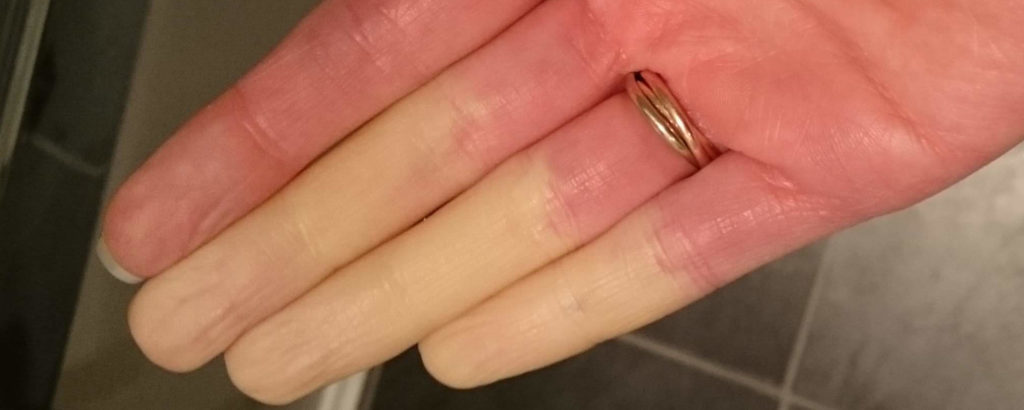News
Feb 18, 2020
Living with Raynaud’s: Raynaud’s Awareness Month 2020
Do you struggle to do up the buttons on your jacket? Or unzip your purse to pay for shopping? Or avoid the frozen aisle? All because your fingers are numb, tingling or painful? Everyday tasks like this can be a challenge if you have Raynaud’s phenomenon.
Raynaud’s is a common condition in which the small blood vessels in extremities, such as hands and feet, are extremely sensitive to changes in temperature, the cold and sometimes stress. This means people with Raynaud’s may experience their fingers and toes turning white, then blue, then red as part of a reaction to the change in temperature, as well as numbness and pain. This may be seasonal, such as during cold weather, or affect you all year round. A Raynaud’s attack can be a very uncomfortable process and can vary in length from a few minutes to a few hours.

Raynaud’s symptoms are:
- Cold fingers and toes, or other extremities
- Colour changes in your skin due to changes in temperature or stress
- Colour changes in the affected areas, from white, to blue/purple and then red
- Numbness, tingling or pain
- Stinging or throbbing pain upon warning or stress relief
If you have any of the symptoms, it could be Raynaud’s. You can take Scleroderma and Raynaud’s UK’s (SRUK) simple online test at www.sruk.co.uk/testme
People of any age can experience Raynaud’s but it typically presents in your 20s and 30s. Primary Raynaud’s is generally mild and manageable, and affects up to 10 million people within the UK; eight million of these are women.
In Secondary Raynaud’s, there is often an associated medical condition causing the problem, although Raynaud’s may be the first symptom. The 300,000 people who have secondary Raynaud’s can experience severe attacks and damage to the skin of the extremities, including ulcers or sores. They are more likely to have symptoms throughout the year. People with Secondary Raynaud’s may develop other features of an underlying autoimmune condition such as systemic sclerosis (scleroderma), lupus or myositis (muscle inflammation).
There is currently no cure for Raynaud’s, however the condition can be managed and does not usually affect someone’s quality of life. Practical tips include making sure that you wear thick gloves and many thin layers in cold weather, and keeping skin moisturised and crack free. If you are affected, you can find more information on how to manage the condition in our SRUK factsheets.
Stress can also make symptoms worse so managing it through practices like mindfulness can help. If you are a smoker, SRUK also recommends that you seek help in quitting as this can also trigger symptoms.
If you notice a change in your symptoms, are worried, or have any other health condition, you should contact your GP. There are prescription treatments that are available for people with severe or secondary Raynaud’s, such as nifedipine. If you have been diagnosed with secondary Raynaud’s, we recommend that you discuss these options with your GP.
SRUK is the only UK Charity dedicated to improving the lives of people with scleroderma and Raynaud’s phenomenon. You can find further information about Raynaud’s, including information on diet and caring for your skin, on their website at www.sruk.co.uk

This article was written for the British Association of Dermatologists by Prof. Christopher Denton PhD FRCP, Consultant Rheumatologist, Royal Free Hospital and UCL Division of Medicine, London, UK and Vice-President of Scleroderma and Raynaud’s UK.